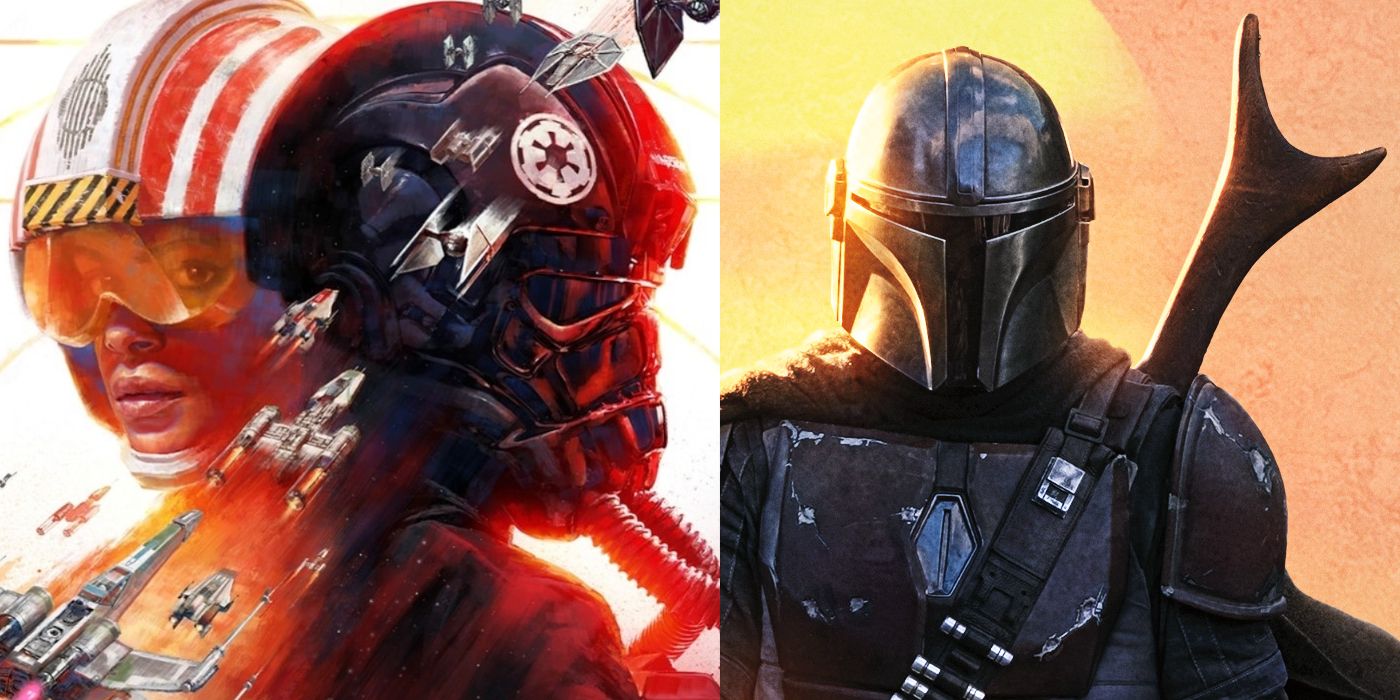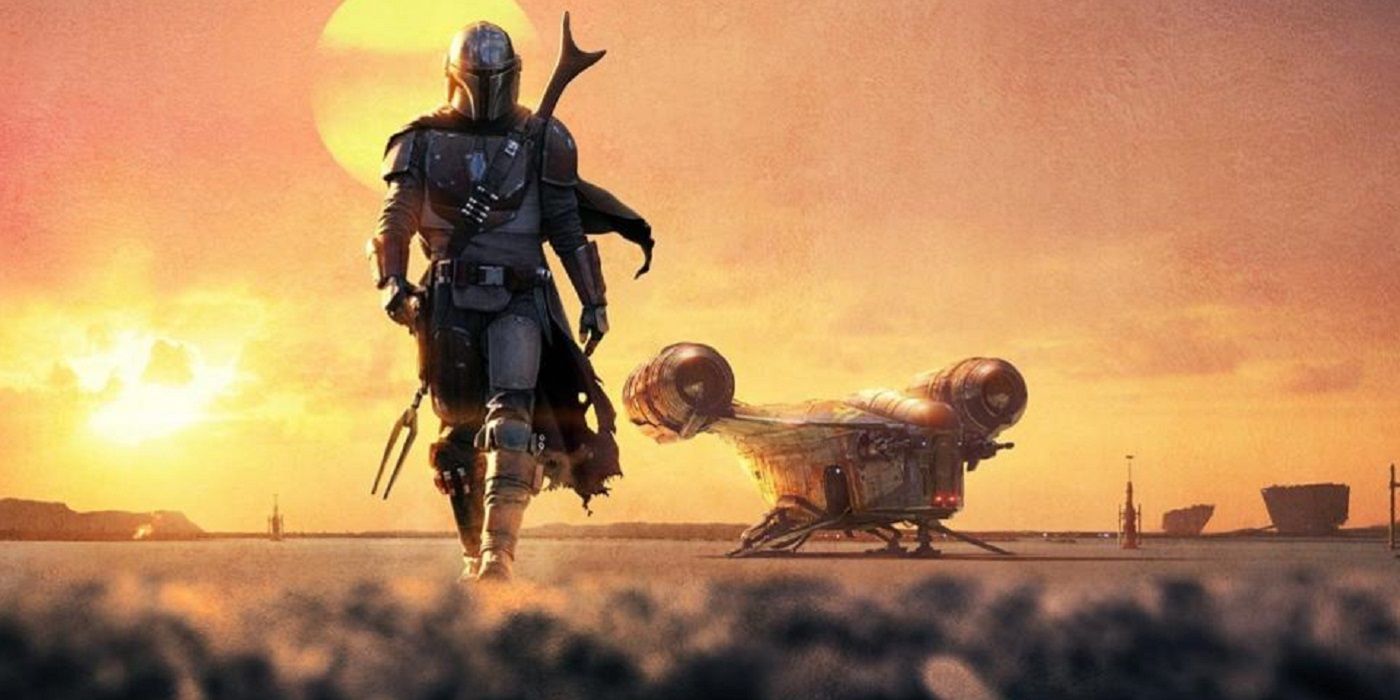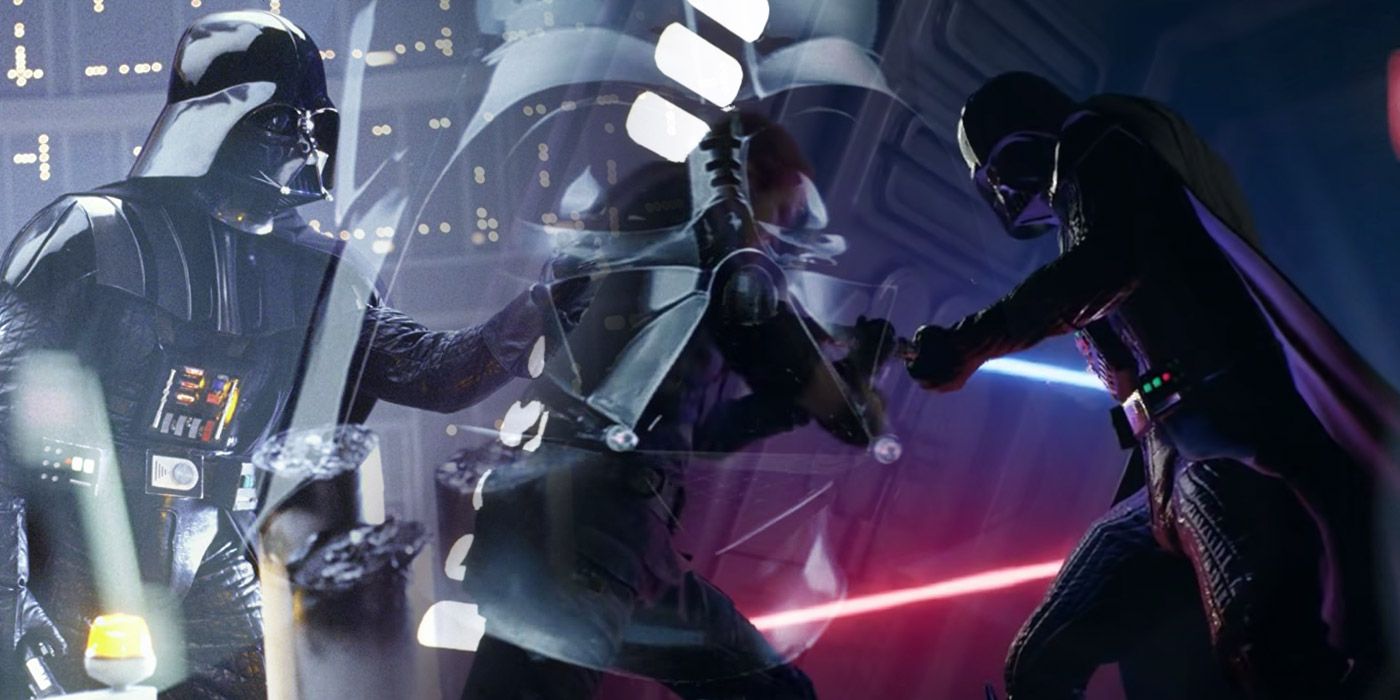Star Wars: Squadrons is a first-person space combat game set mostly after the Battle of Endor. The game just recently released, but some fans have already noticed a common theme between the new title and some recent Star Wars media.
One character in Star Wars: Squadrons has a similarity to the titular lead of The Mandalorian. Their similarity has interesting implications for how Star Wars tells a story, as well as a new direction these two pieces of media seem to be going with a common sci-fi trope.
Shen and Mando
In Star Wars: Squadrons, the character Shen is an Imperial TIE fighter pilot who shares one main feature in common with the Mandalorian. Nobody knows the true face of Shen, and his body has been enhanced after surviving several crashes that basically killed him. Due to his advanced cybernetics, it seems that he either cannot or simply refuses to take off his mask. Like the Mandalorian, he refuses to take off the helmet.
The Mandalorian doesn’t reveal his face until the finale of The Mandalorian’s first season. Prior to this, the show established a new piece of Star Wars lore in that the Mandalorians do not remove their helmets publicly to show they are a Mandalorian above all else, and that their identity beneath the mask is irrelevant. While Shen’s dedication to the Empire also makes this line of reasoning make sense, it is likely Shen, like Darth Vader, is literally unable to survive without the mask he wears in Star Wars: Squadrons.
Masks in Star Wars
However, the use of the mask for both characters shows an interesting twist that has taken place in new Star Wars media. The traditional example of the masked Star Wars villain are the Stormtroopers and TIE fighter pilots in the original trilogy. These stock bad-guys wear masks so that they can be made faceless and dehumanized when the main characters kill them, whereas even small characters on the rebel side have their faces visible through their masks. Another example is the fact that Vader's greatest moment of humanization in the OT comes when his mask is removed.
However, in both The Mandalorian and the Star Wars: Squadrons story, the mask is used to make characters more sympathetic. In Shen’s case, the mask and the damage on it are reminders of the sacrifices the pilot has made for the Galactic Empire to the point that his identity as a pilot is physically inseparable from his identity as a human being. Ironically, the fact that Shen never takes of his mask not only makes him one of the more mysterious characters on the Empire’s side in the game, but also makes him one of the most sympathetic.
In The Mandalorian, the titular character's facelessness has the effect of making him feel more like a western stock hero, like Clint Eastwood’s Man with No Name. In both cases, it allows the viewer or player to project themselves more easily onto the character, a complete reversal to the use of helmets and masks in the original Star Wars trilogy. Unlike movies, video games have long used facelessness as a way to encourage players to project onto the character, like the use of Master Chief’s helmet in the Halo franchise.
What’s most interesting is that details like this further reveal the Star Wars franchise's true current form as a completely multimedia franchise where the movies no longer necessarily take center stage over the TV shows and Star Wars video games. It will be interesting for many fans to see how the reveal of the Mandalorian's face affects the reception of the next season, and whether fans get any more insight into Shen’s mysterious backstory in the future of the games.
Star Wars: Squadrons is available now for PC, PS4, and Xbox One.



